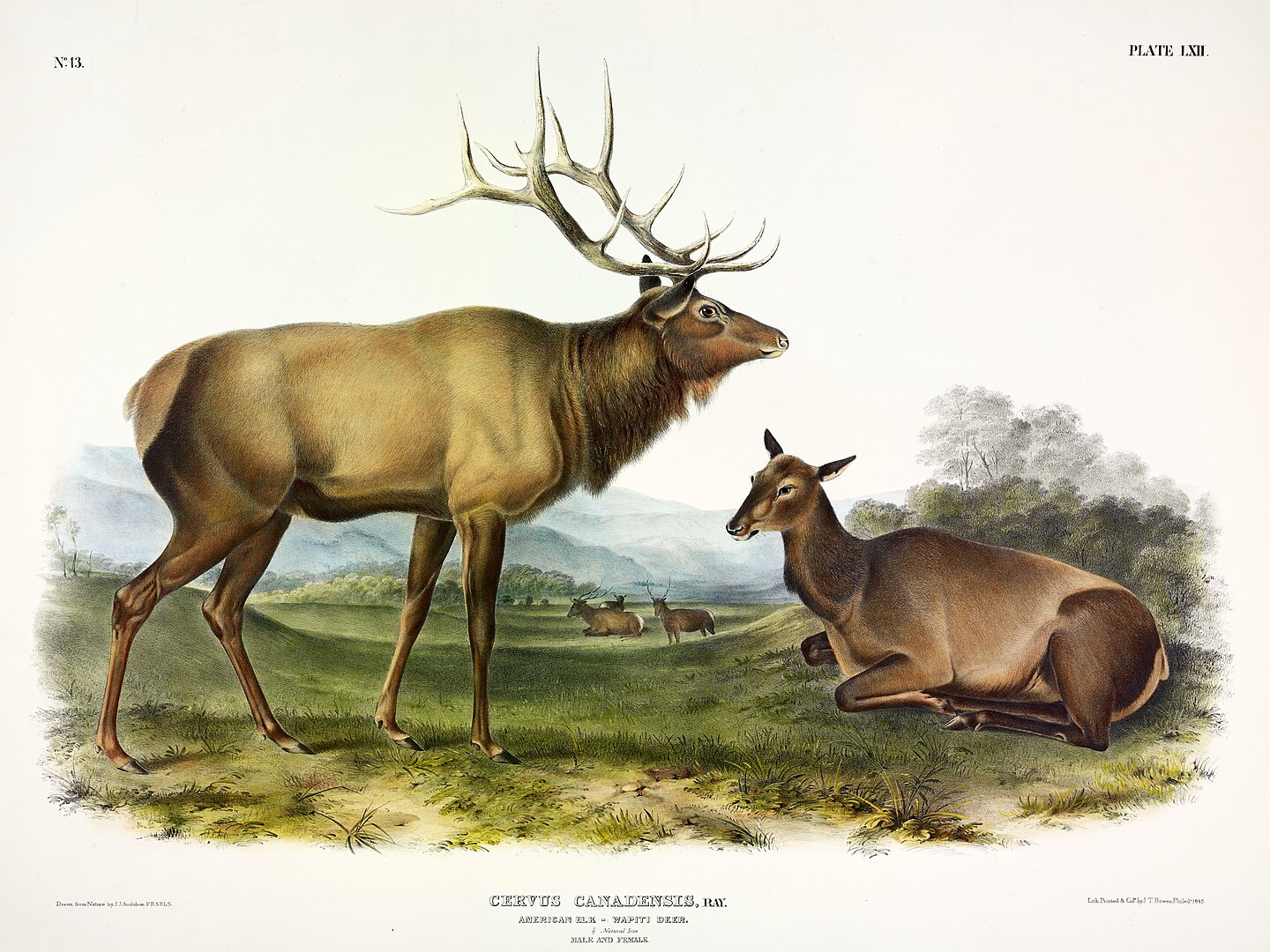In Chapter 2 of Carrying Independence, young Nathaniel Marten races across the Pennsylvania countryside to join his friends Arthur and Kalawi for an elk hunt on Topton Mountain. Their hunt represents not just adventure, but participation in an ancient relationship with the land—one that was changing by 1776. For readers of Carrying Independence, understanding this environmental history at the time of the Declaration of Independence—and the Revolutionary War Pennsylvania wilderness —adds depth to Nathaniel’s world.
First, there is no doubt that this scene is influenced by the opening hunting scene from the film Last of the Mohicans. Although, while those characters killed their quarry, I preferred my expert hunters miss, their hunt interrupted by shots not their own.
To write this scene faithful to the time period, I visited Kutztown and Topton Mountain while researching this novel. Along the way, I also learned a tremendous amount about elks—all for a handful of pages—so you, my dear reader, could envision Kalawi and Nathaniel’s lost wilderness.

The Elk Abundance of Colonial Pennsylvania
These magnificent animals were truly massive—historical records indicate they frequently weighed 1,200 pounds and stood 17 hands (5 feet 8 inches) at the shoulder—far larger than modern Rocky Mountain elk. Unlike today’s carefully managed wildlife populations, colonial elk moved in herds that could number in the hundreds.
Farmers considered them agricultural disasters. A single herd could destroy an entire season’s crop in one night, trampling cornfields and devouring newly planted vegetables. The Pennsylvania elk were part of the Eastern elk subspecies (Cervus canadensis canadensis), which ranged from Georgia to southern Canada and from the Atlantic coast to the Great Plains.
A Hunting Culture Born of Necessity
For Native American tribes like the Shawnee—represented by Kalawi in the novel—elk hunting wasn’t sport but survival. Every part of the animal served a purpose: meat for sustenance, hides for clothing and shelter, antlers for tools, and sinew for thread. The sustainable hunting practices of tribes like the Lenape and Shawnee had coexisted with elk herds for thousands of years.
Like in Nathaniel’s time, the mountain’s dense forests of oak and maple were cut through by game trails, and punctuated by clearings perfect for elk grazing. The rhododendron thickets mentioned in the chapter still flourish there today, creating natural blinds that colonial hunters would have used to approach their quarry. But then, Revolutionary War Pennsylvania wilderness drastically changed.
The Rapid Disappearance
The destruction of Pennsylvania’s elk happened with shocking speed. As European settlement expanded throughout the 1700s, the war was fought, and commercial hunting increased, the massive herds began to shrink. The arrival of market hunters in the early 1800s, who could ship elk meat to growing eastern cities via newly built railroads, worsened it.
By 1850—just 74 years after the Revolutionary War—Pennsylvania’s elk were decimated. When John D. Decker of Centre County shot a young male elk that had been driven south by forest fires, on September 1, 1877, he killed the last eastern elk of Pennsylvania.
Impact on Native American Communities
The disappearance of elk, called wapiti by the Shawnee, meaning “white rump,” devastated Native American communities who had depended on them for generations. For a clan like Kalawi’s in Carrying Independence, losing this crucial food source meant fundamental changes to their way of life. Many were forced to rely more heavily on European trade goods or relocate, following the game westward.
The elk’s extinction represented more than lost hunting opportunities—it symbolized the broader transformation of the landscape that accompanied European colonization. Ancient migration routes were broken by farms and settlements. The late 1800s invention of barbed wire created even more problems—where game roamed was limited, and traditional seasonal hunting grounds became private property. Cultural practices that had sustained Native communities for millennia became impossible to maintain.

Walking in Their Footsteps
Standing on Topton Mountain today, surrounded by the same mountain laurel and oak forests that sheltered Nathaniel and his friends, I wanted to close my eyes, and once more hear the thunder of dozens of eastern elk hooves as they did. The terrain remains rugged and beautiful, perfect elk habitat even now. It’s a landscape that holds memory—of abundance, of loss, and of the complex relationships between humans and the natural world during America’s founding era.
The Return of the Elk Post-Revolutionary War Pennsylvania wilderness.
Pennsylvania’s elk story has a hopeful ending. In 1913, the Pennsylvania Game Commission began reintroducing elk to the state using animals from Yellowstone National Park. Today, approximately 1,000 elk roam the forests of north-central Pennsylvania, primarily in Elk, Cameron, and Clearfield counties.
These modern elk are Rocky Mountain elk (Cervus canadensis nelsoni), a different subspecies from the original Eastern elk (Cervus canadensis canadensis), which is now extinct. But their presence represents something powerful: the possibility of restoration, of bringing back what was lost.
The elk may have vanished from Pennsylvania’s Revolutionary War landscape, but their story reminds us that the America our founders knew was a very different place—wilder, more abundant, and more deeply connected to the rhythms of the natural world.
This post is a deep explanation of a “Fun Fact” for Chapter 2 of Carrying Independence, my historical novel about the signing of the Declaration of Independence. It is part of my ongoing weekly chapter serial release—56 chapters FREE—in honor of our America250 Sesquicentennial on July 4, 2026. Join in and read the chapters on my substack: From the Wandering Desk of Karen A. Chase.
#AmericanRevolution #DeclarationOfIndependence #PennsylvaniaWildlife #ElkHistory #ColonialAmerica #America250 #HistoricalFiction #WildlifeExtinction #Pennsylvania #CarryingIndependence #1776 #RevolutionaryWar #AmericanHistory #WildlifeConservation #ExtinctAnimals
